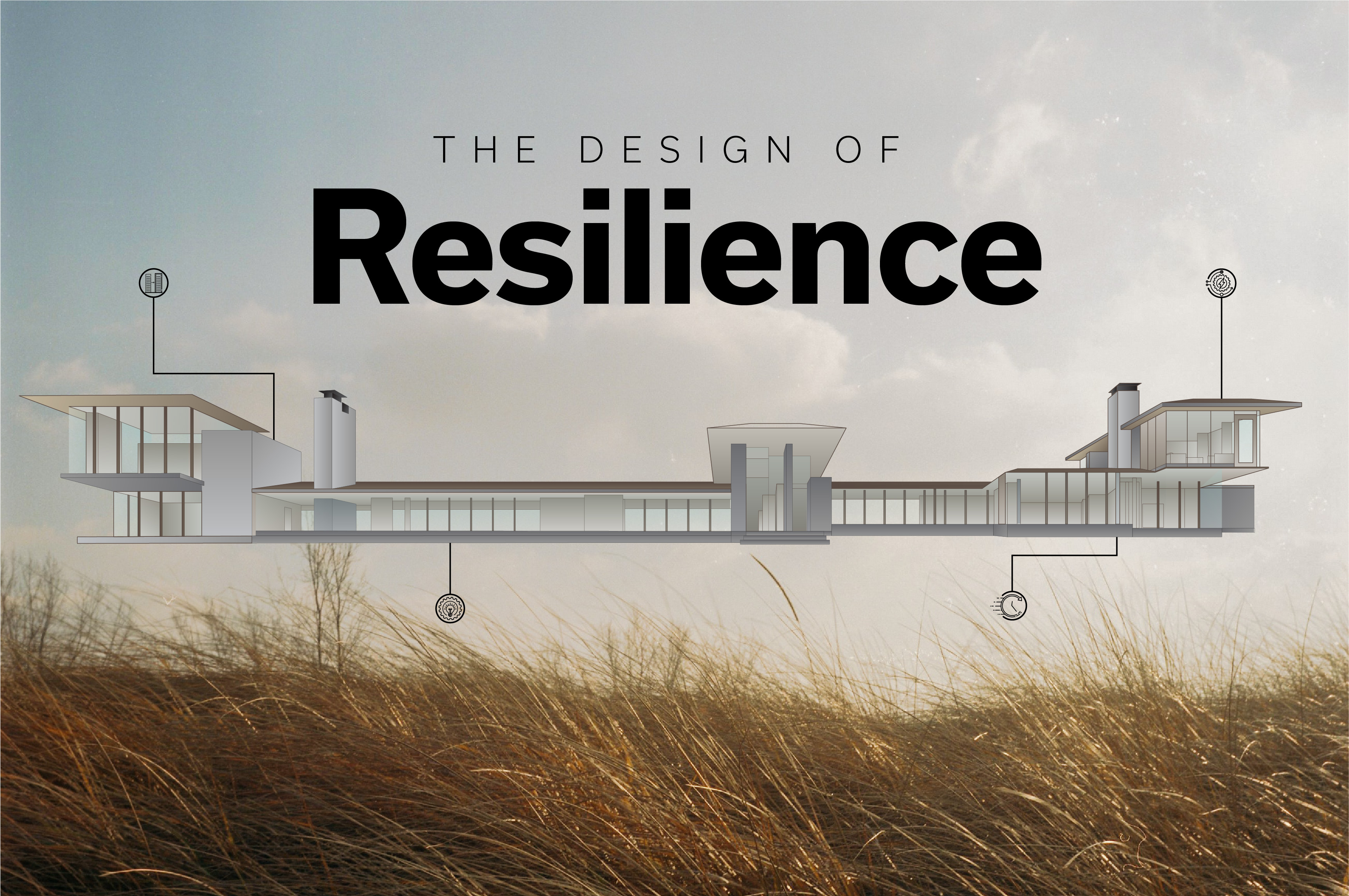The design of resilience
By involving the four key features of resilience (robustness, resourcefulness, rapid recovery, and redundancy) we can ensure that our designs will contribute to a lasting building and a strong community.
At its core, the concept of resilience is the ability to recover and to carry on. As hardship hits, resilience allows us to bounce back. In the built environment, hardships or setbacks come from changing conditions that impact operability or functionality. A resilient building can adapt and maintain functionality throughout a disturbance or interruption, according to the Resilient Design Institute. The disturbances can have natural (earthquake or forest fires) or manmade causes (equipment maintenance neglect or cyber-attack), and they can be short or long-lived.
This has far-reaching consequences in an age of climate change, which can bring an increase in precipitation, intense storms, flooding or on the flip-side, droughts, wildfires, soaring temperatures, and power outages. A resilient building or environment can withstand these intense events and maintain operability and livable conditions. Not only can a single building be resilient, but the guidelines can be scaled up or down to be applied to communities, cities, regions, or households.
Resilient design is a series of guidelines for practical, on-the-ground solutions for the built environment. In a building, resiliency can offer functionality in the face of hardships such as equipment failure, grid off-time, or seismic events, and can elevate wellness with improved indoor air quality. Addressing these issues ensures that our designs will continue to contribute to sustainable goals and strong communities.
The National Infrastructure Advisory Council (NIAC) determined that resilience can be characterized by four key features in building design and operation: Robustness, Resourcefulness, Rapid Recovery, and Redundancy.
PAE helps clients achieve resilient project-specific goals by first listening to our clients. We then collaborate with architects and other consultants to innovate on solutions that provide the desired level of resiliency in MEP designs, all addressing the four key features.
1. Robustness is the ability to maintain critical operations and functions in the face of crisis. MEP building design examples include operable windows, ability to increase filtration level in AHU’s, uptime and islanding via micro-grid (PV, battery storage, generator, and grid interactive controls), power over ethernet lighting, and increased seismic design for MEP infrastructure (usually by matching the building structure seismic design).
2. Resourcefulness is the ability to skillfully prepare for, respond to and manage a crisis or disruption as it unfolds. MEP building design examples include building facility staff training to be able to monitor automatic switch-overs (via building controls) or force manual system switch-overs of MEP systems, ability to disconnect from the grid and operate buildings when “islanded,” and having supply chain agreements in place to refuel diesel generator to prolong building operations.
3. Rapid Recovery the ability to return to and/or reconstitute normal operations as quickly and efficiently as possible after a disruption. MEP building design examples include having an operational plan of action for critical staff to be able to reach the building, having an operational plan of how to operate the building when certain failures happen, have facility staff store enough building repair components to recover from critical failures within a reasonable time, and have a supply chain recovery plan for equipment that cannot be stored onsite.
4. Redundancy is comprised of back-up resources to support the original resilience features in case of failure. MEP building design examples include N+1, 2N, or other redundancy design level for MEP system components, to ensure any critical equipment or infrastructure failure can be backed-up or replaced to keep the building operational. For example, having one extra (N+1) chilled water pump, chillers, boilers, electrical utility connection, and generator are prevalent in Data Centers, Hospitals, Laboratories, and Emergency Operation Center projects.
We recently worked on a confidential project in California that covers over two million square feet on a 40-acre campus. This all-electric project has a big focus on indoor environmental quality, so the design which includes DOAS (dedicated outdoor air) systems which deliver 100% outside air to occupants, also includes a MERV 13, carbon, and PCO (Photo-Catalytic Oxidation) filters on the DOAS to neutralize and capture smoke particles. Located in California, this has huge impacts on the building being able to continue to operate during the intense seasonal wildfires the area sees.
Other examples include the public projects of both Sunnyvale City Hall and the Beaverton Public Safety Center, which are designed to remain operational during an event and serve as the communities’ emergency operations centers. This is a purposeful decision in these projects in order to create community and infrastructure that will allow them to remain in contact with their constituents.
By involving the four key features of resilience (robustness, resourcefulness, rapid recovery, and redundancy) we can ensure that our designs will contribute to a lasting building and a strengthened community.
Connect with our leaders in resilient design:
Christian Agulles and Marco Alves in California
Ruwan Jayaweera and Karina Hershberg in Oregon
Mohammed Haq and Jon Krombein in Washington
Check out our interactive Resiliency infographic by clicking on the image below:

Sources: RELi, Resilient Design Institute, Whole Building Design Guide



